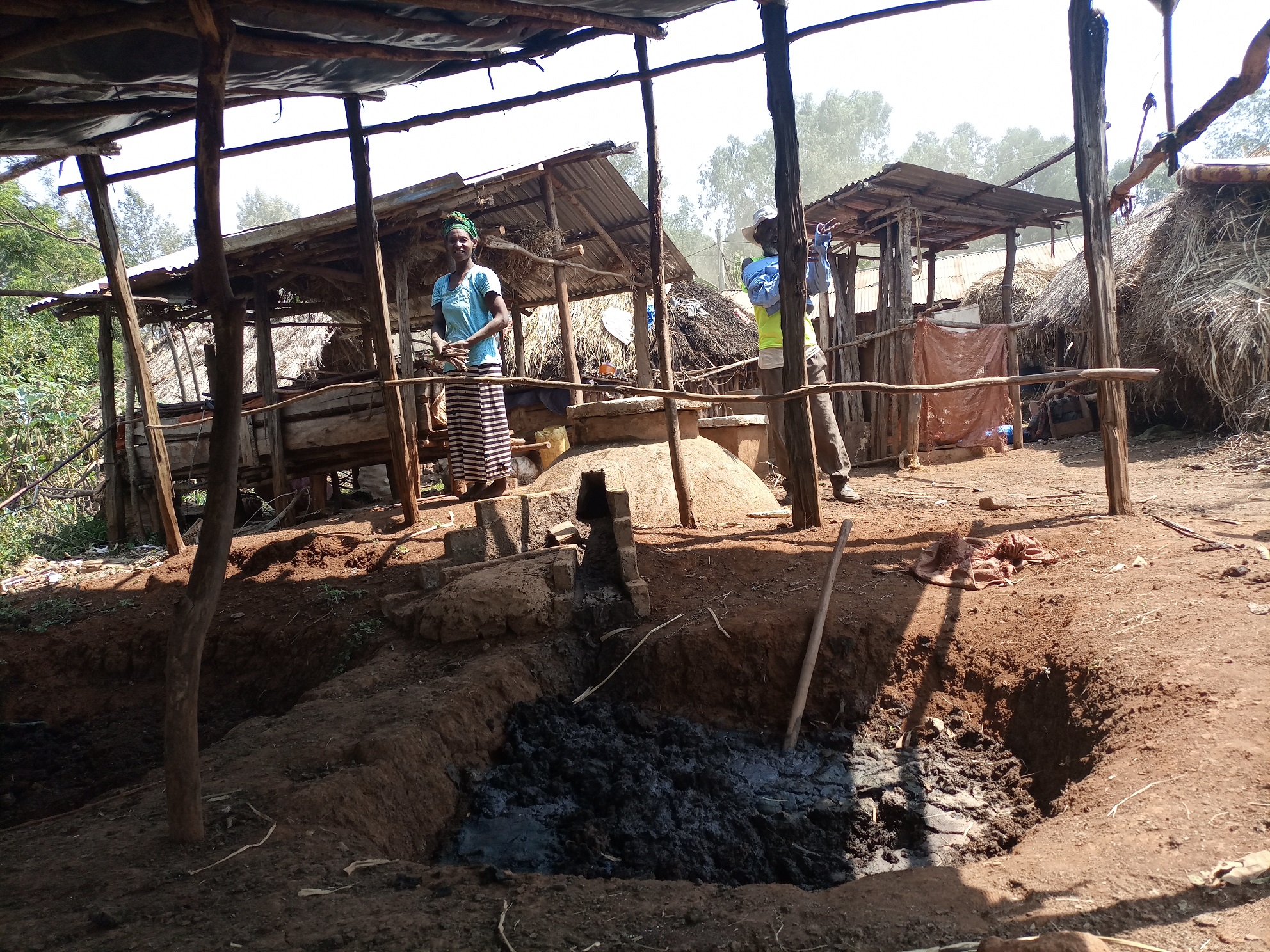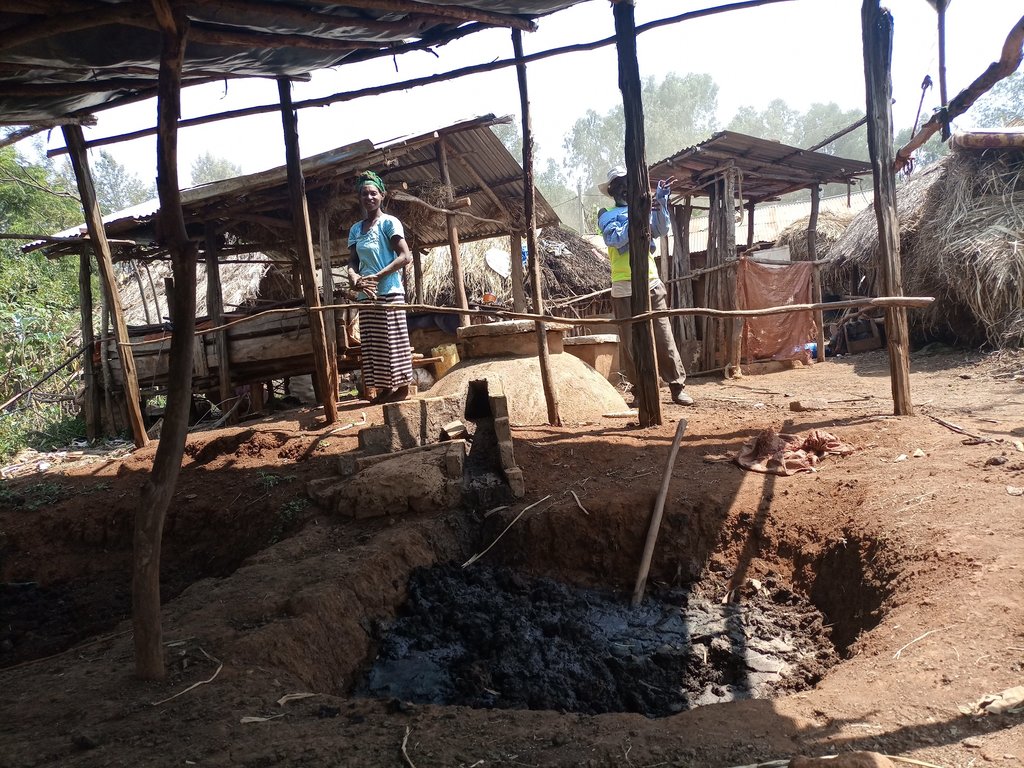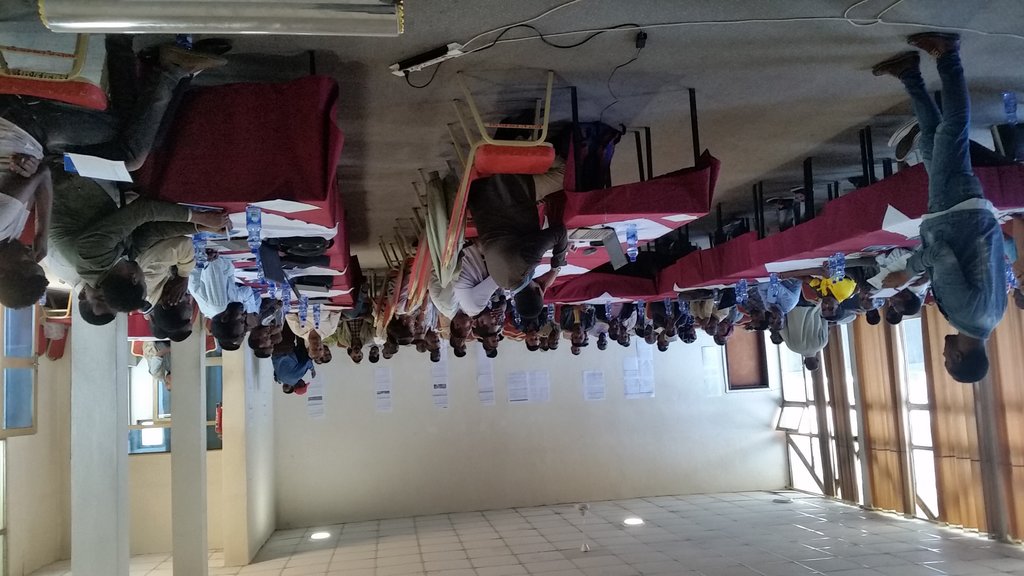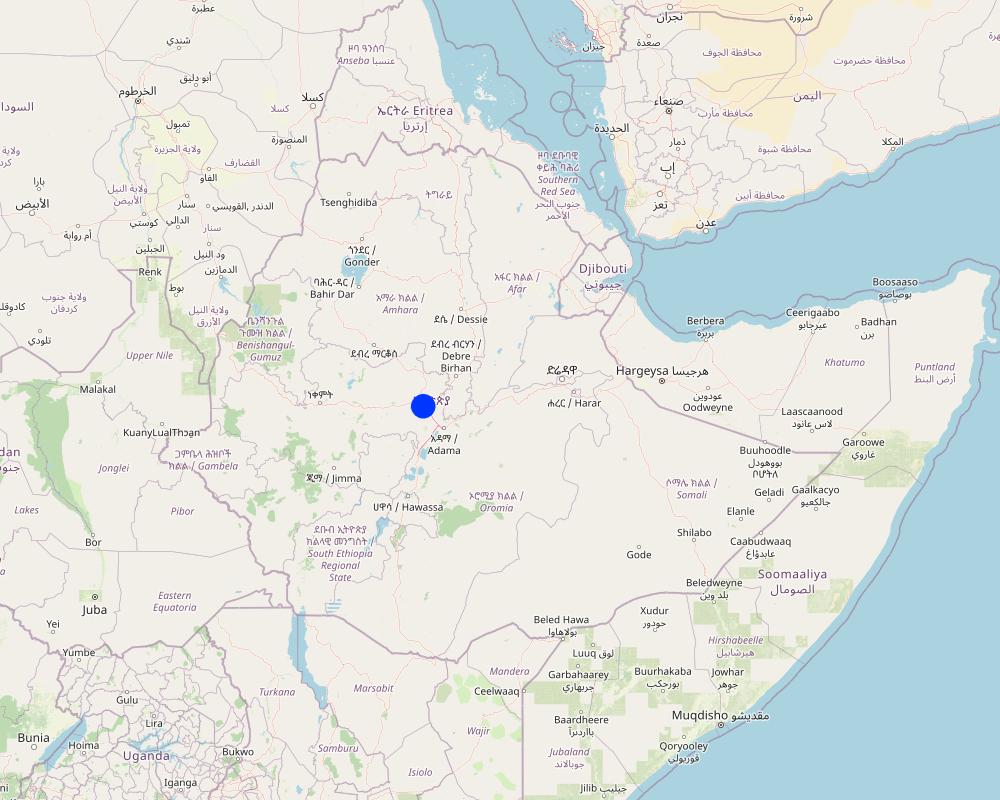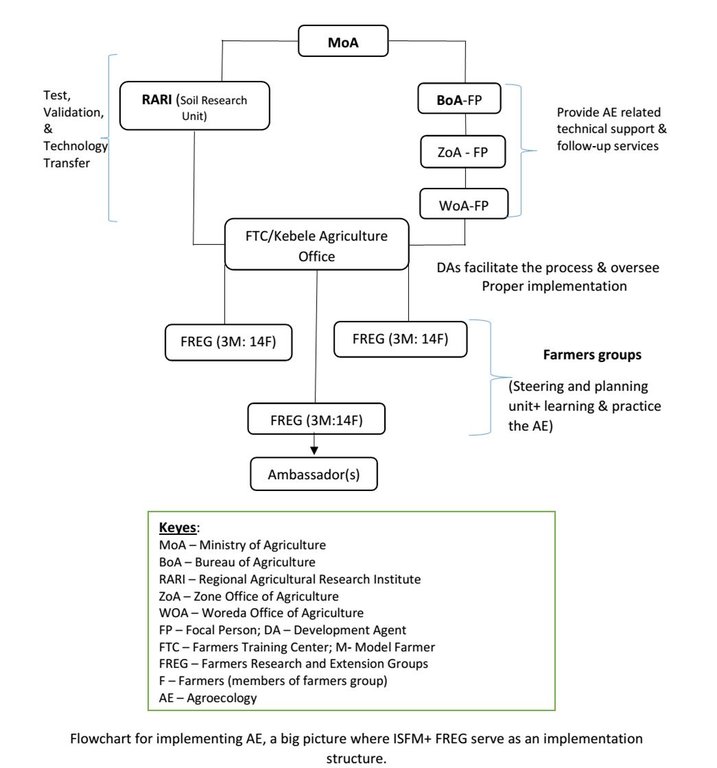Integrated Soil Fertility Management (ISFM) [Эфиопия]
- Создание:
- Обновить:
- Составитель: GERBA LETA
- Редакторы: Noel Templer, Julia Doldt, Torben Helbig, Tabitha Nekesa, Ahmadou Gaye, Siagbé Golli
- Рецензенты: William Critchley, Rima Mekdaschi Studer, Sally Bunning
Qindoomina Misooma Gabbina Biyyee (Afaan Oromoo) /Yeteqenaje ye Afer Limat (Amharic)
approaches_6732 - Эфиопия
Просмотреть разделы
Развернуть все Свернуть все1. Общая информация
1.2 Контактные данные специалистов и организаций, участвующих в описании и оценке Подхода
Название проекта, содействовавшего документированию/оценке Подхода (если применимо)
Soil protection and rehabilitation for food security (ProSo(i)l)Название организации (-ий), содействовавших документированию/оценке Подхода (если применимо)
Alliance Bioversity and International Center for Tropical Agriculture (Alliance Bioversity-CIAT) - Кения1.3 Условия, регламентирующие использование собранных ВОКАТ данных
Когда были собраны данные (на местах)?
07/02/2023
Составитель и ответственный/-ые специалист(-ы) согласны с условиями, регламентирующими использование собранных ВОКАТ данных:
Да
1.4 Ссылка (-и) на Анкету (-ы) по Технологиям УЗП
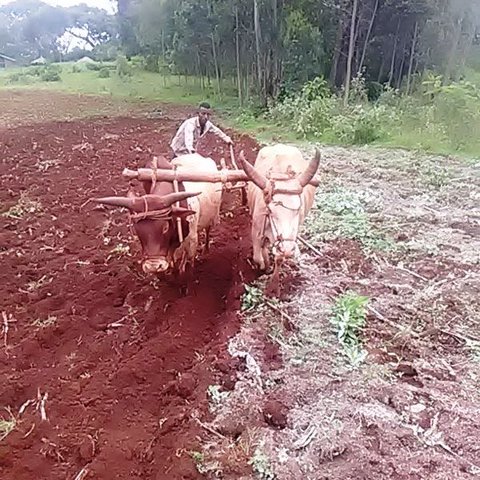
Treating acid soils with lime [Эфиопия]
Acidic soils deprive crops of their full nutrient absorption capacity. Lime application to these soil makes them less acidic. It breaks the barrier that fixes nutrients and ensures crops access to vital soil nutrients that unleash their productivity potential.
- Составитель: GERBA LETA
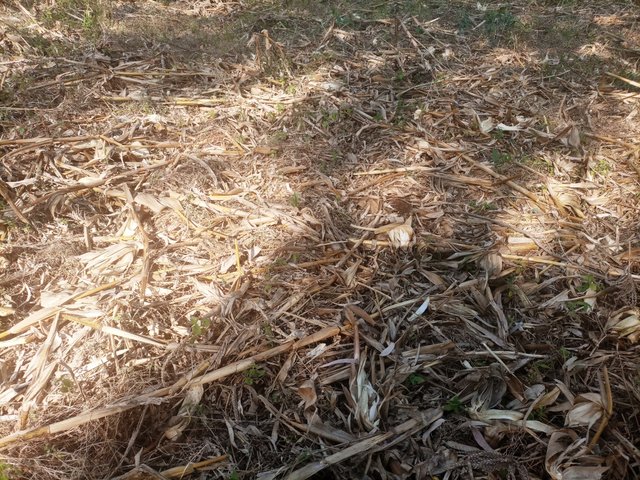
Crop Residue Management [Эфиопия]
Crop residue management involves leaving stover and other trash from cereal crops (including tef, wheat and maize), as well as haulms of legumes, in the field. Crop residues keep the soil covered, retain organic matter and moisture in the soil, and help to ensure better production.
- Составитель: GERBA LETA
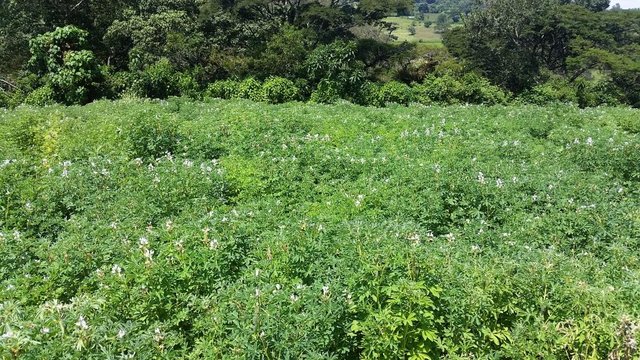
Green Manures [Эфиопия]
Green manures are fast-growing legumes sown in a field, weeks or even months before the main crop is planted. These are plants that are deliberately grown for incorporation into the soil to improve fertility and organic matter content.
- Составитель: GERBA LETA
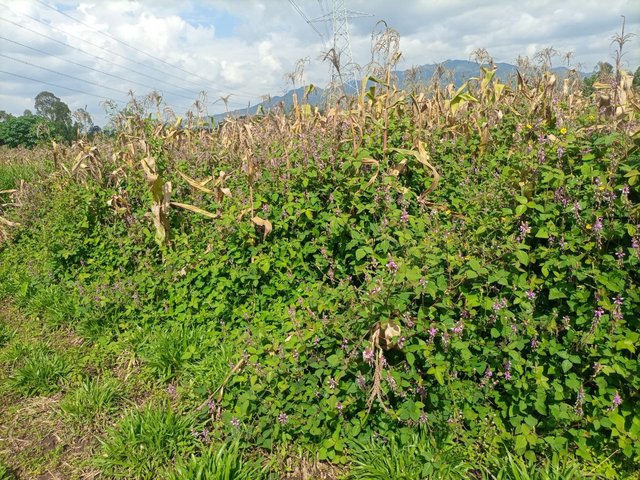
Cover crops [Эфиопия]
Cover crops are crops grown on bare, fallow farmland or under a main crop to cover and conserve the soil by protecting it from exposure to the sun, wind, and direct impact of rain. It fixes nitrogen (if a legume), improves soil fertility, supplies livestock fodder, and helps manage both …
- Составитель: GERBA LETA

Relay Intercropping [Эфиопия]
Intercropping is the growing of two or more crops on the same piece of land at the same time or in temporal sequence. Relay intercropping usually involves planting a legume into an established cereal crop. This farming practice has multiple benefits and is a popular among smallholders in Wolaita zone …
- Составитель: GERBA LETA
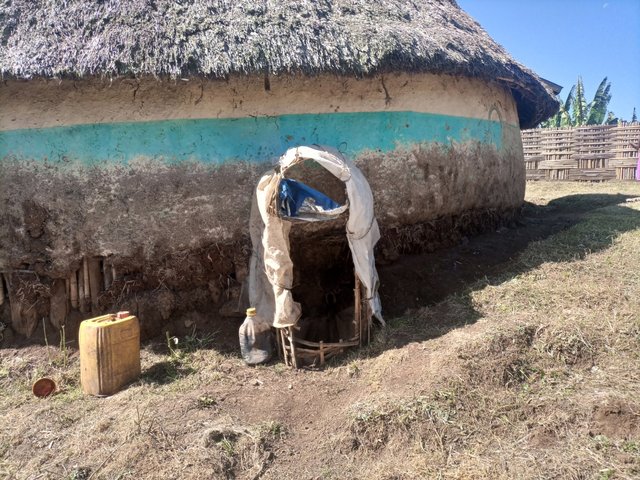
Livestock Urine Collection and Use [Эфиопия]
Collection of livestock urine allows resource-poor farmers to capture nutrient-rich livestock waste and use it to substitute urea fertilizer. It is a liquid organic product that restores soil fertility and pest management.
- Составитель: GERBA LETA
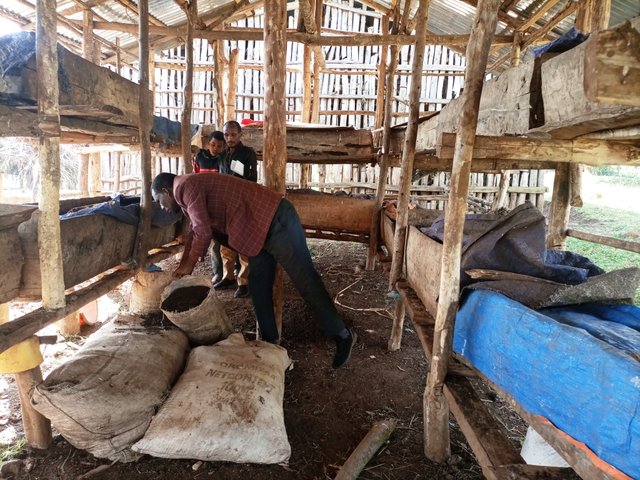
Vermicomposting [Эфиопия]
Vermicompost is the product of the decomposition process using various species of earthworms. It is a form of humus and is produced through worms digesting and excreting organic in their casts. Vermicompost has been shown to be an effective organic soil amendment, reducing the need for inorganic fertilizers.
- Составитель: GERBA LETA
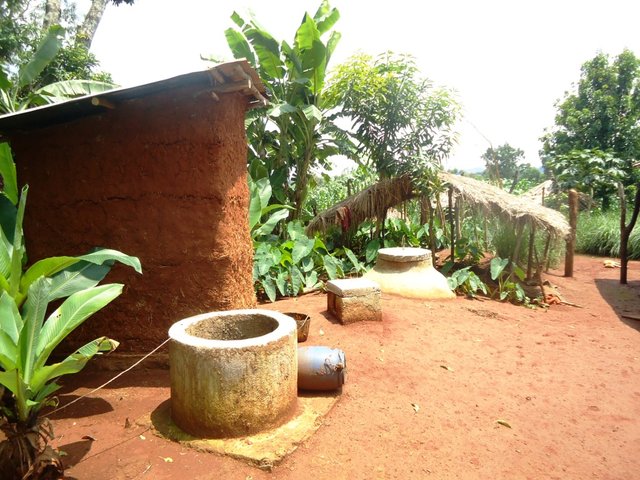
Bioslurry [Эфиопия]
Bioslurry is a byproduct of the anaerobic process used for production of methane (biogas). It is derived from the manure used to feed the biodigester. Bioslurry is an organic fertilizer that serves as a replacement for chemical fertilizers, and also plays a pesticidal role.
- Составитель: GERBA LETA
2. Описание Подхода УЗП
2.1 Краткое описание Подхода
The Integrated Soil Fertility Management (ISFM) approach has been adopted under the Integrated Soil Fertility Management Project (ISFM+). It was introduced as a quick-win solution to increase both crop and biomass production through the incremental promotion of varied but complementary technology packages.
2.2 Подробное описание Подхода
Подробное описание Подхода:
The Integrated Soil Fertility Management (ISFM) approach is intended to increase both crop and biomass production through the incremental promotion of varied but complementary technology packages. These include the production and use of organic fertilizers, treatment of soil acidity, and improved retention of crop residue. All help in reducing the depletion (mining) of soil nutrients. One characteristic feature is the engagement of research and development partners at all levels such as in joint problem identification, learning, participatory planning, piloting technology, and exchange visits. The approach involves model farmers and also focuses on farmers with limited means to purchase chemical fertilizers. It enhances the production of organic fertilizers to increase both soil fertility and crop productivity. Furthermore, ISFM enables farmers to generate off-farm and on-farm income through the production and sale of organic fertilizers, vermiworms, and green manure seeds, etc. The partners assist in identifying soil-related issues, as well as enhancing the adoption and institutionalization of the approach. ISFM aims to improve stakeholders' understanding of land degradation issues and the necessity of SLM by creating access to relevant seasonal training, exposure visits, collective learning, and action.
Project focal persons representing partners at different levels and development agents (DAs) are used to facilitate the process and serve as potential links with stakeholders. At the local level, the Farmers Research and Extension Group (FREG) sub-approach supports the implementation of the technologies on an incremental basis (see WOCAT database). Also, the Soil Fertility Improvement Cluster approach (see WOCAT database) assists in scaling out of the ISFM approach by adopting and superimposing technologies such as vermicompost with improved compost production. Farmer ambassadors are identified from the FREG model based on their performance. They assist in mainstreaming and dissemination of the approach and technologies to indirect beneficiaries. The implementation process of the ISFM involves district and kebele selection, identification of watersheds and voluntary farmers, provision of capacity-building training, conducting participatory planning, supplying inputs, and technical support. To realize the aims, the ISFM+ allocates financial support to the partners at different levels via Local Subsidy Contract.
Project staff including federal and regional advisors are involved. They provide training, technical backstopping, reviewing progress, M&E, and feedback services. District focal person closely follows up on the implementation - with the support of DAs in steering farmers' group meetings and collective learning. In addition, DAs assist in piloting on farm short and long-term demonstrations, organizing field days and exchange visits, collecting data, and overseeing activities.
Land users like the technologies introduced and implemented via the ISFM approach. The promotion of collective learning and action leads to increased soil fertility, and improved crop production and smallholders' livelihoods. The creation of new sources of income for land users is among the benefits they appreciate the most. However, farmers are less enthusiastic by the way that group meetings clash with their other activities and this leads to some members dropping out. Also, the cost of technologies promoted by the ISFM such as combined uses of chemical fertilizers, bio-fertilizers (for legumes), organic fertilizers, and quality seeds are envisaged as a possible constraint among others.
2.3 Фотографии, иллюстрирующие Подход
2.4 Видеоматериалы по применению Подхода
Комментарий, краткое описание:
Video of the approach is not documented.
2.5 Страна/ регион/ место, где применялся Подход
Страна:
Эфиопия
Более точная привязка места:
Addis Ababa
Комментарии:
The approach is currently applied in three to four regional states of Ethiopia.
Map
×2.6 Даты начала и окончания реализации Подхода
Год начала реализации:
2015
Если год начала реализации Подхода достоверно неизвестен, дайте примерную оценку:
менее 10 лет назад (недавняя)
Год окончания (Если Подход больше не применяется):
2025
Комментарии:
The project will be operational up to 2025.
2.7 Тип Подхода
- в рамках проекта/ программы
2.8 Каковы цели/ задачи Подхода
The main objective of the approach is to promote the integration of technologies, collective learning, and action for treating degraded soil, increasing soil fertility and crop productivity while ensuring sustainable uses of land.
2.9 Условия содействующие применению Технологии/ Технологий в рамках Подхода или затрудняющие его
Наличие/ доступность финансовых ресурсов и услуг
- содействуют
Access to financial resources improved farmers' access to materials and inputs on their own. This promotes the adoption and scaling up of the technology using ISFM approach.
Институциональные условия
- содействуют
Institutional setting such as farmers' group formation promotes collective learning and action.
Сотрудничество/ координация действий
- содействуют
Is central to promoting effective implementation of the approach that entails various research and development actors.
Программные документы/ руководящие установки
- содействуют
Such as adopting lime production, distribution and use policy enables successful implementation of the approach.
Осведомленность в области УЗП, доступность технической поддержки
- содействуют
Рынки (для приобретения материалов и услуг, продажи продукции) и цены
- содействуют
Объем работ, доступность рабочей силы
- содействуют
Family labor enables production of organic fertilizers and effective implementation of lime and other technologies which are labor intensive.
3. Участие и распределение ролей заинтересованных сторон
3.1 Заинтересованные стороны, участвующие в реализации Подхода и их роли
- местные землепользователи/ местные сообщества
Model farmers, and other smallholders (followers).
Lead group meeting, facilitate collective learning and action based on the pilot practices/activities.
- эксперты по УЗП/ сельскому хозяйству
Focal persons and experts from soil fertility improvement /extension unit of the district.
Facilitate implementation of the technology via the approach, and serve as a link between stakeholders.
- ученые-исследователи
Soil researchers from Regional Research Institutes, and respective technologies.
Soil testing, production of bio fertilizer, and supporting the different technologies with research findings.
- общественные организации
SNV Ethiopia, Nutrition Sensitive Agriculture, and other GIZ projects.
Integration of efforts such as on biogas/bioslurry production and other respective project implementation activities.
- частный сектор
Agro dealers, and other services providers
Facilitate the distribution of lime and improved seeds, provide services on mechanization such as maintenance, etc.
- местные власти
District office of agriculture, and woreda administration.
Partnerships, acknowledge implementation of the project and provide administrative support when required.
- государственные власти (отвечающие за планирование или принятие решений)
Ministry of Agriculture and Research System.
Support in mainstreaming the technology and approach, policy formulation and research support testing soil and tools...
- международные организации
CIAT, CIMMYT, ICRISAT...
Provide research and technical support in joint areas of intervention.
Если участвовало несколько заинтересованных сторон, назовите ведущую организацию:
Integrated Soil Fertility Management Project (ISFM+).
3.2 Участие местных землепользователей/ местных сообществ на разных стадиях реализации Подхода
| Участие местных землепользователей/ местных сообществ | Перечислите участников и опишите их вовлеченность | |
|---|---|---|
| инициирование/ мотивация | внешняя поддержка | District focal person and development agents. Facilitate the implementation right from awareness raising, farmers' group formation, training, supply inputs, and technically support the implementation. |
| планирование | интерактивное | Regional advisor, focal persons, and the farmers. Each engaged in a participatory planning exercise. |
| выполнение | интерактивное | Farmers, focal persons, and development agents. Farmers implement the technologies being guided by the approach. Whereas, the focal person and development agents oversee and provide technical support. |
| мониторинг/ оценка | интерактивное | Focal person, development agents, and land users. They conduct participatory M&E to ensure collective learning. |
3.3 Схема реализации (если имеется)
Описание:
ISFM approach that run from the federal to kebele where FREG is the pillar approach serving the land users as a platform for collective learning and action at local level.
Автор:
Gerba Leta
3.4 Принятие решений по выбору Технологии/ Технологий УЗП
Укажите, кто принимал решение по выбору применяемой Технологии/ Технологий:
- в основном землепользователи при поддержке специалистов по УЗП
Поясните на чём было основано принятие решений:
- анализ подробно описанного опыта и знаний по УЗП (принятие решений на основе подтвержденных фактов)
- результаты исследований
- личный опыт и мнения (незадокументированные)
4. Техническая поддержка, повышение компетенций и управление знаниями
4.1 Повышение компетенций/ обучение
Проводилось ли обучение землепользователей/ других заинтересованных лиц?
Да
Укажите, кто проходил обучение:
- землепользователи
- местный персонал/консультанты
Если существенно, укажите гендерный и возрастной состав, статус, этническую принадлежность и т.д.
One-third of the land users represented by female farmers.
Тип обучения:
- в ходе работы
- обмен опытом между фермерами
- опытные участки
- общие собрания
Рассматриваемые темы:
Soil degradation, rehabilitation of the degraded soil using different technologies and agronomic practices notably lime, organic fertilizers, bio fertilizer, crop residue management, mixed cropping, green manuring, application of minimum tillage practices, etc.
4.2 Консультационные услуги
Есть ли у землепользователей возможность получать консультации?
Да
Укажите, где именно оказываются консультационные услуги:
- на полях землепользователей
- в постоянно функционирующих центрах
Описание/ комментарий:
Advisory services are provided by the focal person and development agents at Farmers Training Center and on the farmers' field.
4.3 Институциональная (организационная) поддержка
В ходе реализации Подхода были ли организованы новые институциональные структуры или поддержаны уже существующие?
- да, умеренно
Укажите уровень, на котором структуры были укреплены или вновь созданы:
- местные
Опишите организацию, функции и ответственность, членство и т.д.
Farmers Research and Extension Group (FREG) has been established at the local level and has been serving as an approach at the local level. It has been serving as a local platform that brings members of the farmers' group together in participatory planning and joint learning of the technologies piloted on the farmer's field and short and long-term demonstrations.
Укажите тип поддержки:
- финансовая
- повышение компетенций/ обучение
- оборудование
Подробнее:
The project provides financial support through the Local Subsidy Contract. Capacity building is central to the implementation of the project. Farm tools as an incentive for the best-performing farmers and on-field soil testing equipment are provided to support the partner organizations scaling out the implementation of ISFM.
4.4 Мониторинг и оценка
Являются ли мониторинг и оценка частью Подхода?
Да
Комментарии:
Monitoring and evaluation is the pillar of the project activities and the adopted approach. The project along with implementing partners pilot short-term and long-term demonstrations, monitor the progress, and evaluate the achievements. Therefore, M&E is a regular activity in which the federal and regional project advisors rely on to generate feedbacks to amend or improve the implementation of the project activities.
Если да, будет ли данный документ использоваться для мониторинга и оценки?
Да
Комментарии:
This document can simultaneously be used for documenting the approach and monitoring and evaluation.
4.5 Научные исследования
Были ли научные исследования частью Подхода?
Да
Укажите темы исследований:
- технология
Напишите подробнее и назовите тех, кто выполнял исследования:
The research targets the feasibility of the technologies introduced via the ISFM approach and the project itself. The role of integrating different technology packages in improving soil fertility and crop productivity is also among the focuses of the research.
5. Финансирование и внешняя материальная поддержка
5.1 Годовой бюджет мероприятий по УЗП в рамках Подхода
Если точный годовой бюжет неизвестен, укажите примерный диапазон затрат:
- 2000-10000
Комментарий (например, основные источники финансирования/ ключевые доноры):
ISFM+ is the source of the budget. A local Subsidy Contract (LSC) has been provided to partner organizations to effectively implement and follow up the activities with an additional allocation of finance for inputs and services.
5.2 Финансирование и внешняя материальная поддержка, предоставляемая землепользователям
Предоставлялась ли землепользователям финансовая/ материальная поддержка для применения Технологии /Технологий?
Да
Если да, укажите тип(-ы) поддержки, кто ее предоставил и условия предоставления:
The project introduces technologies, provides inputs (improved seeds, chemical fertilizers, lime), and seldom supplies farm tools for a few well-performing models as an incentive.
5.3 Субсидии на отдельные затраты (включая оплату труда)
- нет
- сельскохозяйственные
| Укажите, какие ресурсы были субсидированы | В какой степени | Опишите субсидии подробнее |
|---|
5.4 Кредитование
Предоставлялись ли в рамках Подхода кредиты на мероприятия УЗП?
Нет
5.5 Другие методы или инструменты стимулирования
Использовались ли другие методы или инструменты стимулирования для продвижения Технологий УЗП?
Да
Если да, поясните:
Farm tools for outstanding farmers as well as a solar panel for residents in a rural setting as an incentive for well-performing in adopting the approach and proper implementation of the project.
6. Анализ влияния и заключительные положения
6.1 Влияние Подхода
Сумел ли Подход расширить возможности местных землепользователей, повысить участие заинтересованных сторон?
- Нет
- Да, немного
- Да, умеренно
- Да, существенно
Land users learned the benefit of integrating three or more technologies/practices to improve soil fertility, and crop productivity and ensure the SLM is being in place.
Сумел ли Подход дать возможность принимать решения на основе подтвержденных фактов?
- Нет
- Да, немного
- Да, умеренно
- Да, существенно
The approach certainly enables evidence-based decision-making by comparing the yield from the plots with treatment (technology packages) versus the control (without full packages).
Сумел ли Подход помочь землепользователям внедрить и поддерживать технологии УЗП?
- Нет
- Да, немного
- Да, умеренно
- Да, существенно
The combination of three or more technologies, all in one inspires the land users to adopt and sustainably implement the SLM technologies.
Сумел ли Подход улучшить согласованность действий и повысить рентабельность применения практик УЗП:
- Нет
- Да, немного
- Да, умеренно
- Да, существенно
Coordination at a local level is not up to the expectation.
Сумел ли Подход мобилизовать/ расширить доступ к финансовым ресурсам для применения практик УЗП?
- Нет
- Да, немного
- Да, умеренно
- Да, существенно
Сумел ли Подход расширить знания и возможности землепользователей в применении практик УЗП?
- Нет
- Да, немного
- Да, умеренно
- Да, существенно
It improves the knowledge and skills of land users to implement SLM by promoting collective learning and action that highly increases peer learning through observation and social learning.
Сумел ли Подход расширить знания и возможности других заинтересованных сторон?
- Нет
- Да, немного
- Да, умеренно
- Да, существенно
It impacts or improves the knowledge and skills of indirect beneficiaries through farmer's ambassadors.
Сумел ли Подход укрепить сотрудничество между заинтересоваными сторонами/ выстроить механизмы сотрудничества?
- Нет
- Да, немного
- Да, умеренно
- Да, существенно
It strengthens the inter-farmers collaboration and coordination that is seldom constrained by the overlaps with local activities such as public meetings and other communal affairs mostly known as new arrivals.
Сумел ли Подход снизить остроту конфликтов?
- Нет
- Да, немного
- Да, умеренно
- Да, существенно
Сумел ли Подход расширить возможности социально и экономически уязвимых групп?
- Нет
- Да, немного
- Да, умеренно
- Да, существенно
Farmers who have no financial means to access and use chemical fertilizers and other inputs involved via the approach.
Сумел ли Подход содействать гендерному равенству и расширить права и возможности женщин и девочек?
- Нет
- Да, немного
- Да, умеренно
- Да, существенно
One-third of a member of the farmers' group are women farmers- a signal for improvement of participation by gender.
Сумел ли Подход стимулировать молодежь/ будущее поколение землепользователей заниматься УЗП?
- Нет
- Да, немного
- Да, умеренно
- Да, существенно
There is an assumption that young people learn from the family and neighbors who engaged in the implementation of the approach. This certainly inspires the young generation to take up and implement SLM activities.
Сумел ли Подход разрешить правовые проблемы землевладения/ землепользования, препятствующие использованию технологий УЗП?
- Нет
- Да, немного
- Да, умеренно
- Да, существенно
Сумел ли Подход способствовать улучшению продовольственой безопасности/ качества питания?
- Нет
- Да, немного
- Да, умеренно
- Да, существенно
Through promoting technologies/practices that improve production and productivity. By promoting legumes crop production using biofertilizers and as part of intercropping practices that ensure the nutrition security of the family farmers.
Сумел ли Подход расширить доступ к рынкам?
- Нет
- Да, немного
- Да, умеренно
- Да, существенно
It improves participants' access to the inputs market (selling organic fertilizers, green manure seeds, vermiworms, and surplus products).
Сумел ли Подход улучшить санитарные условия и доступ к водоснабжению?
- Нет
- Да, немного
- Да, умеренно
- Да, существенно
Сумел ли Подход привести к более эффективному использованию электроэнергии/ возобновляемых источников энергии?
- Нет
- Да, немного
- Да, умеренно
- Да, существенно
Mainly through supporting biogas/bioslurry technology, and the introduction of woodlots to family farmers via agroecology projects that adopt a similar approach.
Сумел ли Подход улучшить способность землепользователей адаптироваться к изменениям климата и смягчать последствия катастрофических погодных явлений?
- Нет
- Да, немного
- Да, умеренно
- Да, существенно
This is partly through adopting minimum tillage practices, crop residue management, and the production and use of organic fertilizers that reduce carbon emissions and foster carbon sequestration.
Сумел ли Подход привести к созданию новых рабочих мест/ к расширению возможностей получения дохода?
- Нет
- Да, немного
- Да, умеренно
- Да, существенно
It creates income opportunities by promoting surplus production, production, and sale of organic fertilizers, vermiworms, and green manure seeds.
6.2 Основные причины, побуждающие землепользователей внедрять УЗП
- рост продуктивности
Integration of practices particularly treating the soil with lime and intensive production and use of organic fertilizers introduced through ISFM increase production.
- снижение деградации земель
Integration of SLM technologies/practices acquired through the application of the approach mitigated the degree of land degradation at the farm level.
- экологическая сознательность
Through the provision of training, demonstration, and exchange visit... the approach promotes land users' consciousness regarding the environment.
- приобретение знаний и опыта в области УЗП
The approach allows farmers to understand well the essence of SLM through evidence-based implementation and learning that promote their knowledge and skills.
6.3 Долгосрочная устойчивость мероприятий в рамках Подхода
Могут ли землепользователи самостоятельно (без внешней поддержки) продолжать применение того, что было реализовано в рамках Подхода?
- да
Если да, опишите как:
As the production of organic fertilizers adopted on an individual basis and tangible benefit acquired from the implementation of the integrated approach introduced via the approach as well as the increasingly growing supply of lime for acid soil amendments similar to other chemical fertilizers, the likelihood of sustaining the approach for implementing integrated technologies is inevitable. Besides, the public organizations for instance bureaus of Agriculture and line offices such as in west Oromia of Jimma and Buno-Bedele zones institutionalized the production and uses of organic fertilizers via huge investments in establishing vermiculture centers to reach out to the large majority of smallholders subjected to soil degradation issues.
6.4 Сильные стороны/ преимущества Подхода
| Сильные стороны/ преимущества/ возможности по мнению землепользователей |
|---|
| It promotes collective learning and action among smallholders living in a homogenous landscape facing similar land/soil degradation issues. |
| It enhances soil fertility and soil health by introducing integrated technologies and creating evidence-based learning. |
| Gain widespread publicity that allows the public and land users to build trust in the approach and component technologies that positively impact the livelihood of smallholders and the land in general. |
| Сильные стороны/ преимущества/ возможности по мнению составителя или других ключевых специалистов |
|---|
| The approach has been adopted and institutionalized within the government's mainstream rural development and agricultural extension. |
| The project and the implementation approach are in line with the government's short and long-term plan to ensure the food and nutrition security of the nations while conserving natural resource basis. |
| Integration is basic to address the nexus of issues that combine knowledge and skills development, the introduction of important agricultural inputs, technologies, or practices, all in one. |
6.5 Слабые стороны/ недостатки Подхода и пути их преодоления
| Слабые стороны/ недостатки/ риски по мнению землепользователей | Возможные пути их преодоления/снижения? |
|---|---|
| Integrating technologies/practices and inputs via the approach has cost implications. | Promote the land user's awareness of the cost-benefit of adopting the approach and introduction of subsidy to some inputs such as agriculture lime for acid soil amendments. |
| The approach drives labor-demanding technologies and practices. | Promote collective action through adopting labor share arrangements as well as efficiently use family labor for follow-up of the production of organic fertilizers by task sharing. |
| The high investment cost for some technologies is promoted by the approach. | Enable land users to make the right choices of diverse technologies catered through the project and the adopted approach. |
| Delay in supply of agricultural inputs such as agricultural lime | Encourage private sectors involvement or the agro dealers in the supply of the agricultural inputs. |
| Слабые стороны/ недостатки/ риски по мнению составителя или ответственных специалистов | Возможные пути их преодоления/снижения? |
|---|---|
| The limited scope of the project implementation sites. | To try to reach out to similar landscapes with similar land degradation issues including the marginal regions. Or else, institutionalize the approach at the national level so that the public sector takes up and popularizes it in areas with similar problems. |
| The collaboration and collective action at local levels through the existing platform is staggered by new arrivals and other local administrative chores. | Local government actors and partners need to be well aware and give due emphasis beyond considering the intervention implemented through ISFM as merely project activities that usually come and go. |
7. Справочные материалы и ссылки
7.1 Методы сбора/источники информации
- опросы землепользователей
8
- опросы специалистов/экспертов по УЗП
5
7.2 Ссылки на опубликованные материалы
Название, автор, год публикации, ISBN:
Leta, G., Schulz, S., Alemu, G. 2020. Agricultural extension approach: evidence from an Integrated Soil Fertility Management project in Ethiopia. Frontiers of Agricultural Science and Engineering, 7(4): 1-13. DOI: 10.15302/J-FASE-2020331
Где опубликовано? Стоимость?
Free online
7.3 Ссылки на материалы, доступные онлайн
Название/ описание:
Integrated Soil Fertility Management
Адрес в сети Интернет:
https://ifdc.org/integrated-soil-fertility-management-isfm/
Ссылки и модули
Развернуть все Свернуть всеСсылки

Treating acid soils with lime [Эфиопия]
Acidic soils deprive crops of their full nutrient absorption capacity. Lime application to these soil makes them less acidic. It breaks the barrier that fixes nutrients and ensures crops access to vital soil nutrients that unleash their productivity potential.
- Составитель: GERBA LETA

Crop Residue Management [Эфиопия]
Crop residue management involves leaving stover and other trash from cereal crops (including tef, wheat and maize), as well as haulms of legumes, in the field. Crop residues keep the soil covered, retain organic matter and moisture in the soil, and help to ensure better production.
- Составитель: GERBA LETA

Green Manures [Эфиопия]
Green manures are fast-growing legumes sown in a field, weeks or even months before the main crop is planted. These are plants that are deliberately grown for incorporation into the soil to improve fertility and organic matter content.
- Составитель: GERBA LETA

Cover crops [Эфиопия]
Cover crops are crops grown on bare, fallow farmland or under a main crop to cover and conserve the soil by protecting it from exposure to the sun, wind, and direct impact of rain. It fixes nitrogen (if a legume), improves soil fertility, supplies livestock fodder, and helps manage both …
- Составитель: GERBA LETA

Relay Intercropping [Эфиопия]
Intercropping is the growing of two or more crops on the same piece of land at the same time or in temporal sequence. Relay intercropping usually involves planting a legume into an established cereal crop. This farming practice has multiple benefits and is a popular among smallholders in Wolaita zone …
- Составитель: GERBA LETA

Livestock Urine Collection and Use [Эфиопия]
Collection of livestock urine allows resource-poor farmers to capture nutrient-rich livestock waste and use it to substitute urea fertilizer. It is a liquid organic product that restores soil fertility and pest management.
- Составитель: GERBA LETA

Vermicomposting [Эфиопия]
Vermicompost is the product of the decomposition process using various species of earthworms. It is a form of humus and is produced through worms digesting and excreting organic in their casts. Vermicompost has been shown to be an effective organic soil amendment, reducing the need for inorganic fertilizers.
- Составитель: GERBA LETA

Bioslurry [Эфиопия]
Bioslurry is a byproduct of the anaerobic process used for production of methane (biogas). It is derived from the manure used to feed the biodigester. Bioslurry is an organic fertilizer that serves as a replacement for chemical fertilizers, and also plays a pesticidal role.
- Составитель: GERBA LETA
Модули
Нет модулей


